This article was medically reviewed by Erik Kramer, DO, MPH and by wikiHow staff writer, Christopher M. Osborne, PhD. Dr. Erik Kramer is a Board-Certified Primary Care Physician at the University of Colorado. With over 15 years of experience, his clinical interests include obesity and weight management, diabetes care, and preventive care, as well as embracing a holistic approach to primary care. He received his Doctorate in Osteopathic Medicine (D.O.) from the Touro University Nevada College of Osteopathic Medicine and completed his residency at Central Maine Medical Center. Dr. Kramer is a Diplomate of the American Board of Obesity Medicine.
There are 8 references cited in this article, which can be found at the bottom of the page.
This article has been viewed 122,383 times.
Milia look a bit like whitehead pimples, but they’re actually small cysts caused by trapped bits of the protein keratin. They’re nearly always completely harmless medically, but having them under your eyes—which is a common spot for milia—can be quite frustrating due to how they look. While it’s generally fine to just let the milia go away on their own, you can try an under-eye routine that may help speed the process along. For more immediate removal options, contact your primary care doctor or dermatologist.
Steps
Following an Under-Eye Routine
-
1Wash your face with a gentle cleanser once or twice per day. Splash your face with lukewarm water, then gently massage in a small amount of a hypoallergenic facial cleanser. Rinse the cleanser away with cool water, then pat your face dry with a soft cloth.[1]
- The best time to wash your face is in the evening before going to bed. You can also wash in the morning, especially if your dermatologist recommends it. Alternatively, you might just use lukewarm water and a clean cloth to gently wipe your face in the morning.
-
2Use steam from the shower or sink to soften your skin. Do this after washing your face. If you showered, let the steam build up in your bathroom and hang out in there for 5-10 minutes. Or, fill the sink with hot water, lean your face over it, and drape a towel over your head for 5-10 minutes.[2]
- Milia aren’t caused by clogged pores, but letting the steam open your pores may make it easier to exfoliate dead skin cells covering the milia.
- Steam also softens your skin, which makes exfoliating a bit easier.
Advertisement -
3Gently exfoliate under your eyes with a warm, damp, soft cloth. After you’re done with your steam treatment, run a clean cloth under warm water and squeeze out the excess. Rub the area under your eyes gently for 1-2 minutes, using a circular motion and light pressure. Rinse your face with cool water, then pat it dry with a clean towel.[3]
- Don’t rub so hard that you cause redness or discomfort. Your goal is to remove dead skin cells from the area of the milia, not to try to rub the milia off!
- Exfoliate every other day, unless your dermatologist recommends doing so more or less frequently.
-
4Apply a natural remedy like honey or rose water, if desired. Both honey and rose water have antimicrobial properties and may potentially encourage milia to disappear more quickly. For a simple honey mask, apply a small amount of honey beneath your eyes, let it sit for 15 minutes, then wipe it away completely with lukewarm water and a soft cloth.
- Alternatively, you can make honey masks with ingredients like turmeric, almond oil, aloe vera, or oatmeal.
- For a rose water face mask, mix together spoonfuls of plain yogurt and honey, then stir in a few drops of rose water. As with a plain honey face mask, leave it on your face for 15 minutes before wiping it away.
- There’s no real evidence that natural masks like these will help get rid of milia, but they’re also very unlikely to cause any problems.
-
5Conceal the milia with hypoallergenic makeup if you wish. If you want to hide the milia while you treat them, use a lightweight, hypoallergenic makeup that won’t clog your pores or cake over your skin cells. Remove the makeup completely when you wash your face in the evening.[4]
- Small amounts of concealing makeup shouldn’t impact how long the milia will last. Caking on heavy amounts of makeup may cause the milia to stick around longer, though.
Consulting a Dermatologist
-
1Don’t pick, poke, or try to remove milia, especially near your eyes. You can’t “pop” milia like pimples (which you shouldn’t do anyway), and trying to do so may break the skin and cause an infection or scarring. While it’s possible to remove milia yourself with a sterilized needle, tweezers, and comedone extractor, you should definitely never try this with any milia that are anywhere near your eyes.[5]
- The risk of injuring your eye with a sharp instrument is simply too great to risk.
- Think twice before trying to remove milia that aren’t near your eyes. Even if you properly sterilize your tools to reduce the risk of infection, there’s still a chance you’ll cause scarring. It’s always safer to see have a doctor remove milia.
-
2Apply an OTC topical medication with your doctor’s approval. Do this if you prefer a medical treatment to a natural mask. It’s always best to consult your dermatologist or primary care doctor before using any of the numerous over-the-counter options available. They’ll help you choose the right option for your specific needs and avoid potential drug interactions or side effects.[6]
- Only use treatments that are specifically labeled for use near the eyes. Even then, be extra careful not to get any of the medication into your eyes.
- These topical treatments often include one of the following ingredients: alpha hydroxy acids; salicylic acid; retinol.
-
3Treat milia with prescribed topical retinoids. Talk to a dermatologist about the option of treating the milia with topical retinoids. Topical means a cream or a gel that you put on top of your skin, rather than a medicine that you ingest. If your doctor prescribes topical retinoids, you will most likely have to apply the retinoid to the milia every day for several weeks.[7]
- Retinoid is the active form of vitamin A.
- Keep in mind that this is purely cosmetic, since milia aren’t actually harmful, so you could just wait for them to go away.
-
4Undergo “deroofing” or similar mechanical removal techniques. Your primary care doctor or dermatologist will likely remove milia using a process called “deroofing.” They’ll create a tiny slice in your skin right next to each milia, then use a comedone extractor and/or tweezers to draw and pull the milia out through the skin opening.[8]
- This is an extremely delicate procedure when done anywhere near the eyes. Always leave it to the professionals, or simply leave the milia alone.[9]
-
5Discuss alternate treatments like cryotherapy or laser ablation. Milia can, in some cases, be removed using methods other than manual extraction. These are less likely when the milia are near your eyes, out of concern for any accidents that may cause eye damage. Alternate treatments may include:[10]
- Cryotherapy, in which the milia are frozen off with a small, specialized tool.
- Laser ablation, which essentially “zaps” the milia away with a targeted beam of light.
Focusing on Patience and Prevention
-
1Leave milia alone if they don’t bother you physically or emotionally. Unless they get infected, most likely due to you scratching or picking at them, milia are completely harmless physically. Therefore, leaving them alone is nearly always the appropriate medical recommendation. They’ll usually go away on their own within 2 weeks to 6 months.[11]
- However, if having prominent milia under your eyes (or elsewhere) is causing you emotional distress, it’s reasonable to have them removed for your own wellbeing. Let your doctor know if this is the case for you.
-
2Don’t worry about milia on newborns or infants. Roughly half of all babies develop at least some milia on their faces during their first 6 months of life. It’s not clear exactly why this happens, but it’s completely normal and nearly always completely harmless. The milia will almost certainly go away on their own by around 6 months of age.[12]
- Never try to remove milia from a baby yourself, and don’t expect to find a legitimate doctor who will do so either. The only reason a doctor might consider removing milia is if they are red, swollen, and possibly infected.
-
3Take care of your skin to possibly reduce the likelihood of getting milia. There’s no guaranteed way to prevent milia, but being kind to your skin may lower your chances. Proper skin care may also reduce your risk of acne and more serious conditions like skin cancer. In addition to an under-eye cleaning, steaming, and exfoliating routine, take steps like:[13]
- Applying sunscreen whenever you go outdoors.
- Wearing a broad-brimmed hat to keep the sun off your face.
- Removing makeup thoroughly at bed time.
- Contacting your doctor regarded the appropriate treatment for any abrasions or minor burns on your skin. Milia can sometimes occur in the area of healing skin.
References
- ↑ https://www.aao.org/eye-health/diseases/what-are-milia
- ↑ https://hscweb3.hsc.usf.edu/dermatology/what-are-milia-and-how-do-you-get-rid-of-them/
- ↑ https://hscweb3.hsc.usf.edu/dermatology/what-are-milia-and-how-do-you-get-rid-of-them/
- ↑ https://health.clevelandclinic.org/does-babys-skin-have-tiny-white-bumps-leave-them-alone/
- ↑ https://hscweb3.hsc.usf.edu/dermatology/what-are-milia-and-how-do-you-get-rid-of-them/
- ↑ https://www.aao.org/eye-health/diseases/what-are-milia
- ↑ https://my.clevelandclinic.org/health/diseases/17868-milia
- ↑ https://dermnetnz.org/topics/milium
- ↑ https://youtu.be/At84GJ3HXI8?t=4



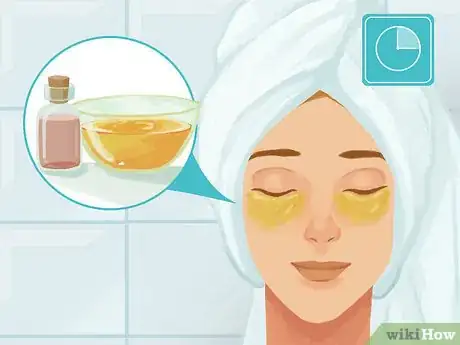

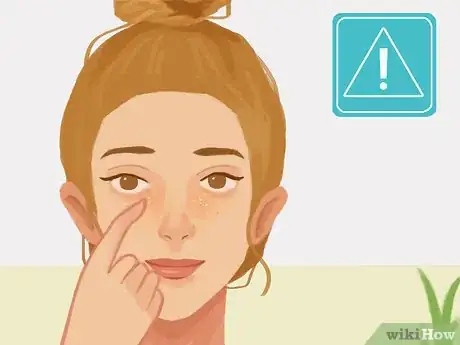
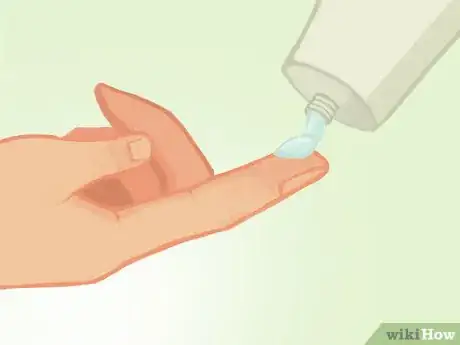
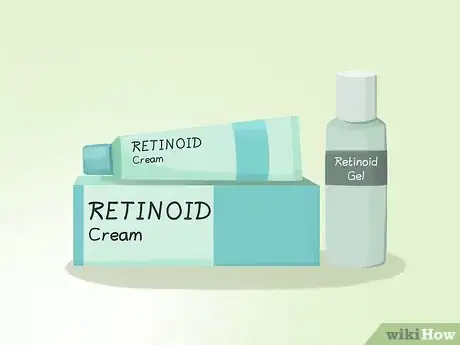




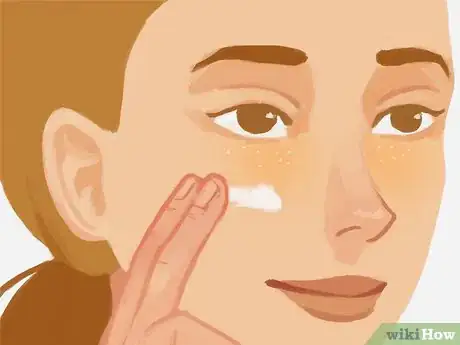



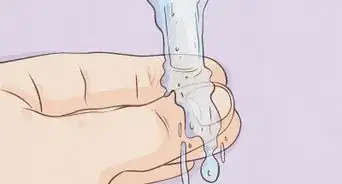
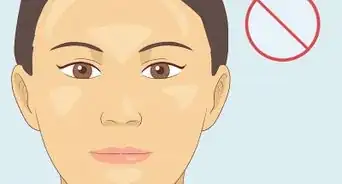
-Step-12-Version-3.webp)



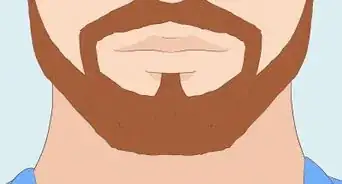

















































Medical Disclaimer
The content of this article is not intended to be a substitute for professional medical advice, examination, diagnosis, or treatment. You should always contact your doctor or other qualified healthcare professional before starting, changing, or stopping any kind of health treatment.
Read More...